CROMAKALIM
Synonym(s):(±)-trans-6-Cyano-3,4-dihydro-2,2-dimethyl-4-(2-oxopyrrolidin-1-yl)-2H-1-benzopyran-3-ol
- CAS NO.:94470-67-4
- Empirical Formula: C16H18N2O3
- Molecular Weight: 286.33
- MDL number: MFCD00133201
- SAFETY DATA SHEET (SDS)
- Update Date: 2025-08-06 15:14:14
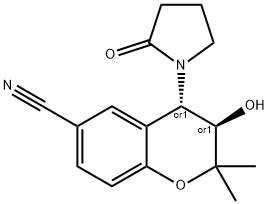
What is CROMAKALIM?
Description
(±)-
Chemical properties
White Crystalline Solid
The Uses of CROMAKALIM
Cromakalim causes vasodilation by activation of potassim channels
The Uses of CROMAKALIM
Cromakalim has been used:
- as a potassium channel agonist to study its response to an acute increase in downstream pressure in rat lymphatic vessels.
- as a potassium channel opener to study its effects on the release of transmitters from adrenergic nerves in rat vas deferens.
- as a potassium channel activator to study its effects on the release of transmitters from purinergic and cholinergic nerves in the rat detrusor muscle.
What are the applications of Application
(±)-Cromakalim is a prototypical Kir6 (KATP) channel activator
Definition
ChEBI: Cromakalim is a 1-benzopyran.
Biological Activity
Prototypical K ATP channel opener. Relaxes rabbit isolated portal vein with an IC 50 value of 21 nM . Potent, orally active and hypotensive in vivo .
Biochem/physiol Actions
Cromakalim is an activator of the potassium channel. It is involved in the relaxation of the vascular smooth muscles. Cromakalim exhibits anti-hypertensive activity.
References
1) Sanguinetti?et al. (1988),?BRL 34915 (cromakalim) activates ATP-sensitive K+ current in cardiac muscle; Proc. Natl. Acad. Sci. USA,?85?8360 2) Wu?et al.?(2011),?Reopening of ATP-sensitive potassium channels reduces neuropathic pain and regulates astroglial gap junctions in the rat spinal cord; Pain,?152?2605 3) Roy Chowdhury?et al.?(2017),?ATP sensitive potassium channel openers: A new class of ocular hypotensive agents; Exp. Eye Res.,?158?85 4) Cao?et al.?(2016),?Opening of the Adenosine Triphosphate-sensitive Potassium Channel Attenuates Morphine Tolerance by Inhibiting JNK and Astrocyte Activation in the Spinal Cord; Clin. J. Pain,?32?617
Properties of CROMAKALIM
| Melting point: | 242-244°C |
| storage temp. | 2-8°C |
| solubility | Soluble in DMSO (up to 40 mg/ml) or in Ethanol (up to 10 mg/ml). |
| form | solid |
| color | Off-white |
| Stability: | Stable for 2 years from date of purchase as supplied. Solutions in DMSO or ethanol may be stored at -20° for up to 3 months. |
Safety information for CROMAKALIM
Computed Descriptors for CROMAKALIM
New Products
4,4-Difluoropiperidine hydrochloride tert-butyl 9-methoxy-3-azaspiro[5.5]undecane-3-carboxylate Indole Methyl Resin N-Isopropylurea N,N-Dicyclohexylcarbodiimide(DCC) MELDRUMS ACID 5-METHYLISOXAZOLE-4-CARBOXYLIC ACID Magnessium Bis glycinate Zinc ascorbate 1-bromo-2-butyne 2-acetamidophenol 9(10H)-anthracenone Erythrosin B, 4-Piperidinopiperidine 2-((4-morpholinophenylamino) (methylthio) methylene) malononitrile 2,4-dihydroxybenzaldehyde 3-(4-morpholinophenylamino)-5-amino-1H-pyrazole-4-carbonitrile Methyl 2-methylquinoline-6-carboxylate 2,6-dichloro-4-nitropyridine 4-Bromo-2-chlorobenzonitrile 2-(benzylamino)acetic acid hydrochloride 4-(tert-Butoxycarbonylamino)but- 2-ynoic acid 3,4-dihydro-2H-benzo[b][1,4]dioxepine 1-Phenyl-1-cycloprppanecarboxylicacidRelated products of tetrahydrofuran
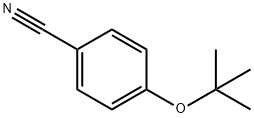

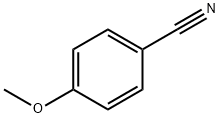

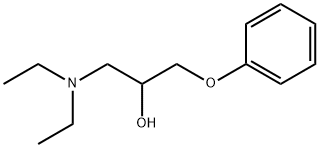


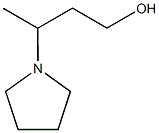
You may like
-
 Cromakalim CAS 94470-67-4View Details
Cromakalim CAS 94470-67-4View Details
94470-67-4 -
 3-(4-amino-1-oxoisoindolin-2-yl)-1-methylpiperidine-2,6-dione 98%View Details
3-(4-amino-1-oxoisoindolin-2-yl)-1-methylpiperidine-2,6-dione 98%View Details -
 614-19-7 98%View Details
614-19-7 98%View Details
614-19-7 -
 3112-85-4 Methyl phenyl sulfone 98%View Details
3112-85-4 Methyl phenyl sulfone 98%View Details
3112-85-4 -
 20677-73-0 (2,2-diethoxyethyl)methylamine 98%View Details
20677-73-0 (2,2-diethoxyethyl)methylamine 98%View Details
20677-73-0 -
 3-(4-(hydroxyamino)-1-oxoisoindolin-2-yl)piperidine-2,6-dione 98%View Details
3-(4-(hydroxyamino)-1-oxoisoindolin-2-yl)piperidine-2,6-dione 98%View Details -
 57381-49-4 2-bromo-4-chlorobenzonitrile 98%View Details
57381-49-4 2-bromo-4-chlorobenzonitrile 98%View Details
57381-49-4 -
 4,6-dichloropyrimidine-5-carbaldehyde 98%View Details
4,6-dichloropyrimidine-5-carbaldehyde 98%View Details
5305-40-8
